Discover how to use ChatGPT, the AI chatbot from OpenAI to revolutionize your SME’s digitalisation process. Boost efficiency and stay competitive in the digital age.
Introduction
In today’s competitive business landscape, small and medium-sized enterprises (SMEs) must embrace digitalisation to stay relevant and thrive. One powerful tool that can help drive this digital transformation is ChatGPT. In this article, we’ll dive deeper into the potential of ChatGPT for SME digitalisation, explore real-world examples, and learn how to integrate it into your business.
What is ChatGPT from OpenAI?
ChatGPT is an Artificial Intelligence (AI) large language model (LLM) that uses advanced algorithms to understand and generate human-like text. It can process and produce content in various formats, making it a versatile and valuable resource for businesses seeking to automate tasks, improve efficiency, and enhance customer experience.
How it works
At its core, ChatGPT relies on machine learning techniques to identify patterns and relationships within large datasets. By training the model using vast amounts of text data, it learns to generate contextually relevant and coherent responses based on user inputs.
AI language models and their applications
AI language models have come a long way, with various applications across industries. From virtual assistants like Siri and Alexa to chatbots that handle customer inquiries, these models are revolutionizing the way we interact with technology and each other.
For example, online retailers use AI-powered chatbots to provide personalized product recommendations based on user preferences, while news websites employ AI-generated content to draft articles on finance, sports, and more.
Why SMEs Need Digitalisation
Digitalisation is essential for SMEs to remain competitive and grow. Embracing digital technologies can lead to cost savings, increased efficiency, and enhanced customer experiences. We can see that Malaysia Government have been encouraging digital transformation of SMEs through SME Digitalisation Grant during Budget 2020, and also the newest SME Digitalisation Grant during the Budget 2023.
Cost Savings
By automating tasks and reducing manual work, SMEs can save both time and money. This frees up resources to invest in other areas of the business, such as marketing or product development.
For instance, an accounting firm could use ChatGPT to automate the generation of financial reports, reducing the time spent by employees on manual data entry and report creation. Like finance staff can ask Chat GPT for the journal entry for recording the sale of a car for RM 80,000, and it will return an answer along with context and explanation.
Increased Efficiency
Streamlined processes and improved communication help businesses operate more efficiently. Digital tools, including AI-powered solutions like ChatGPT, can eliminate bottlenecks and optimize workflows for better results.
A marketing agency could leverage ChatGPT to write social media posts and campaign ideas, allowing their creative team to focus on high-level strategy and design.
Enhanced Customer Experience
Digitalisation enables SMEs to provide personalized interactions and faster response times, leading to happier customers and increased brand loyalty.
For example, a small e-commerce store can use ChatGPT-powered AI chat like SiteGPT – ChatGPT for every website to handle customer inquiries and provide instant support, improving the overall shopping experience.
How to Start Using ChatGPT: A Step-by-Step Guide
1. Create an OpenAI account:
Visit chat.openai.com and click on “Sign up” to create a new account, or log in to your existing account. Alternatively, you can sign up using your Google or Microsoft account.



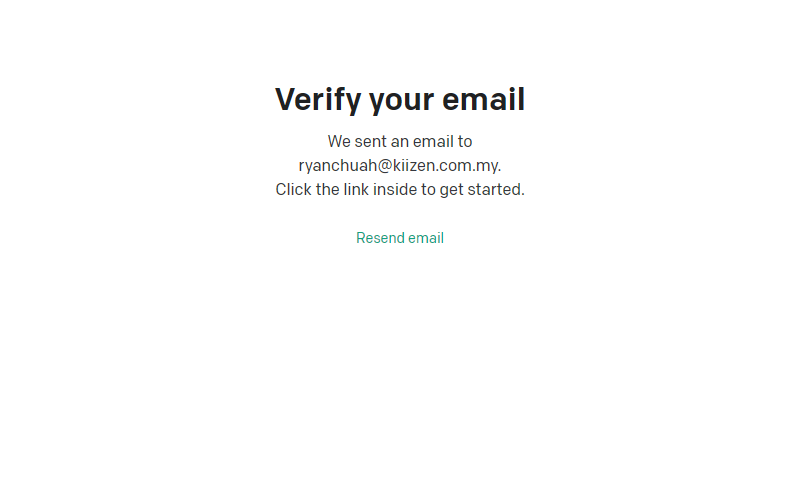

2. Enter your personal information:
Complete the OpenAI free account creation process and you’ll be asked to provide your name and clicking “Continue.”
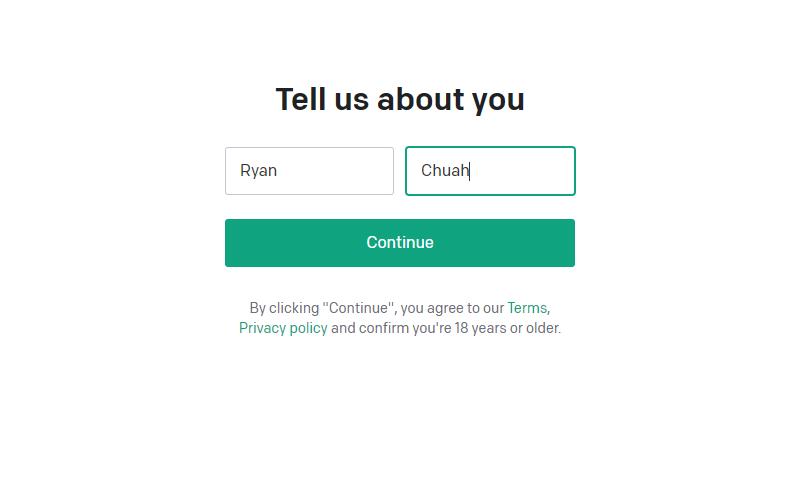
3. Verify your phone number:
Link your account to a phone number by selecting your region, entering your phone number, and clicking “Send code.” Input the verification code you receive on your phone to complete this step.


4. Accept ChatGPT Terms and Conditions:
Read and accept ChatGPT’s terms and conditions, data collection and privacy policy, and provide feedback as prompted in the messages that appear.
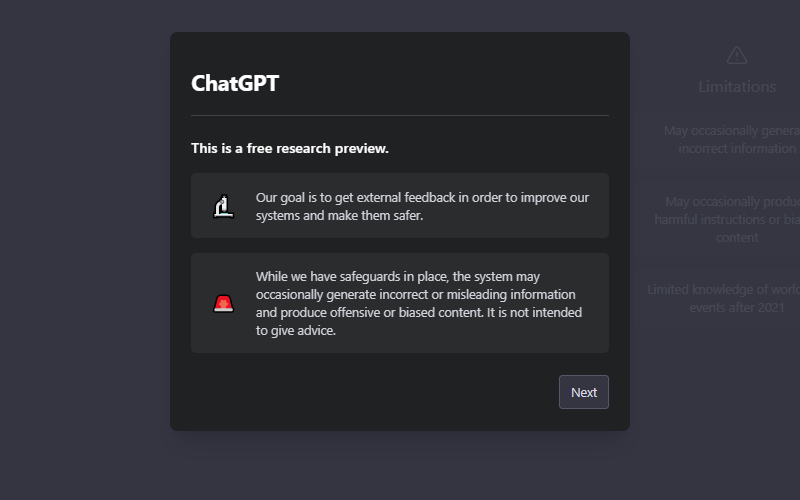
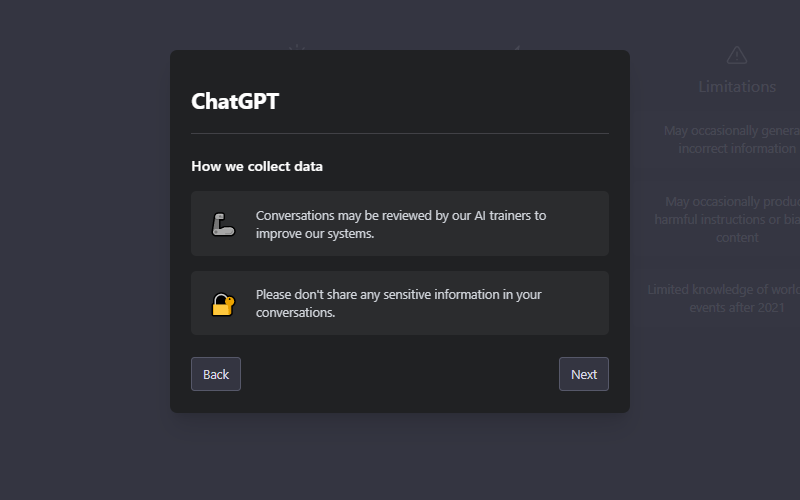

5. Start using ChatGPT:
Now you have access to ChatGPT free version. Just type your questions or prompts in the chat box at the bottom of the screen to start your conversation with ChatGPT.
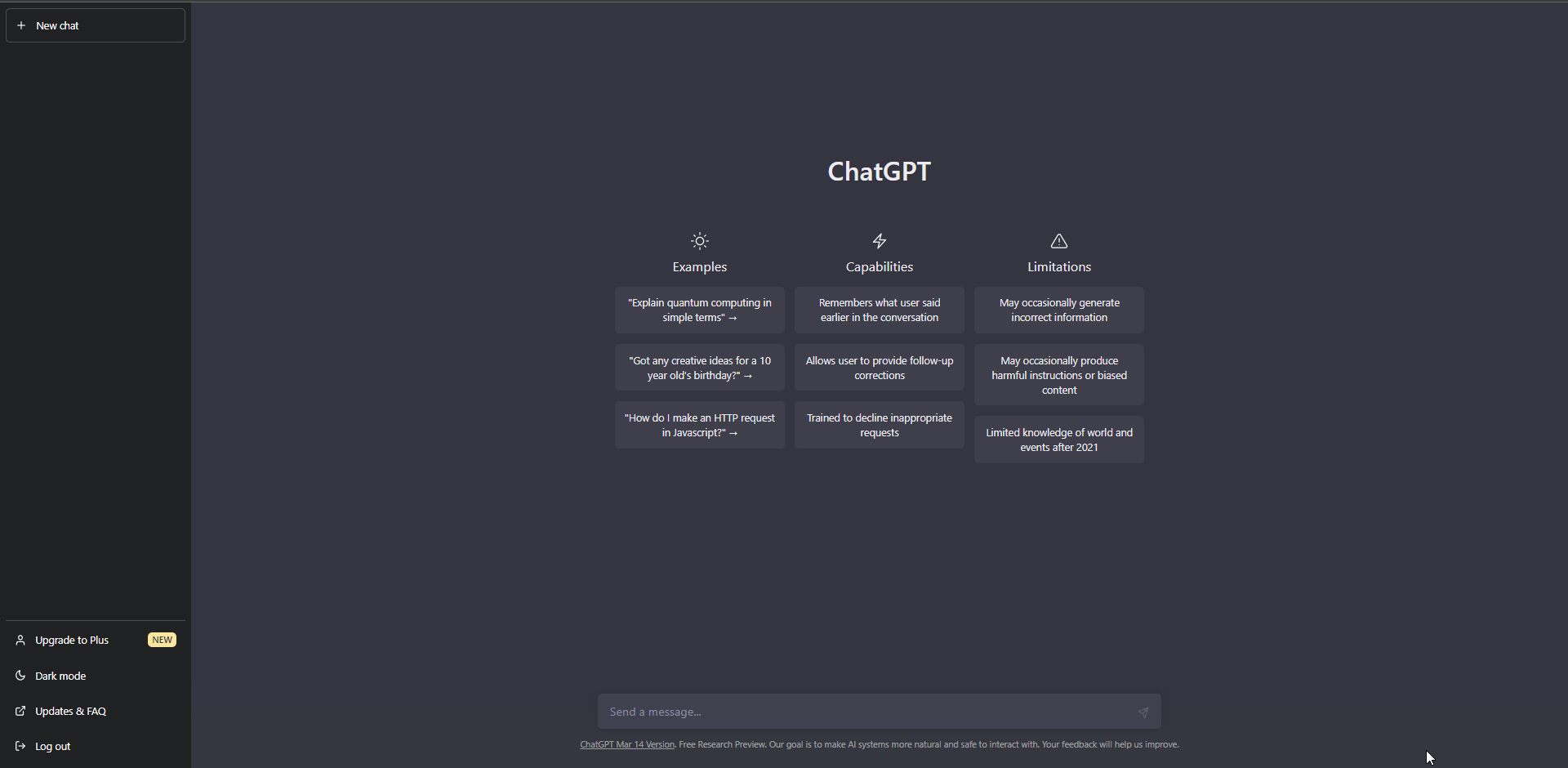

6. Wait for ChatGPT’s response:
ChatGPT will process your input and generate a response within seconds. The AI-generated response will appear below your message in the chat interface.
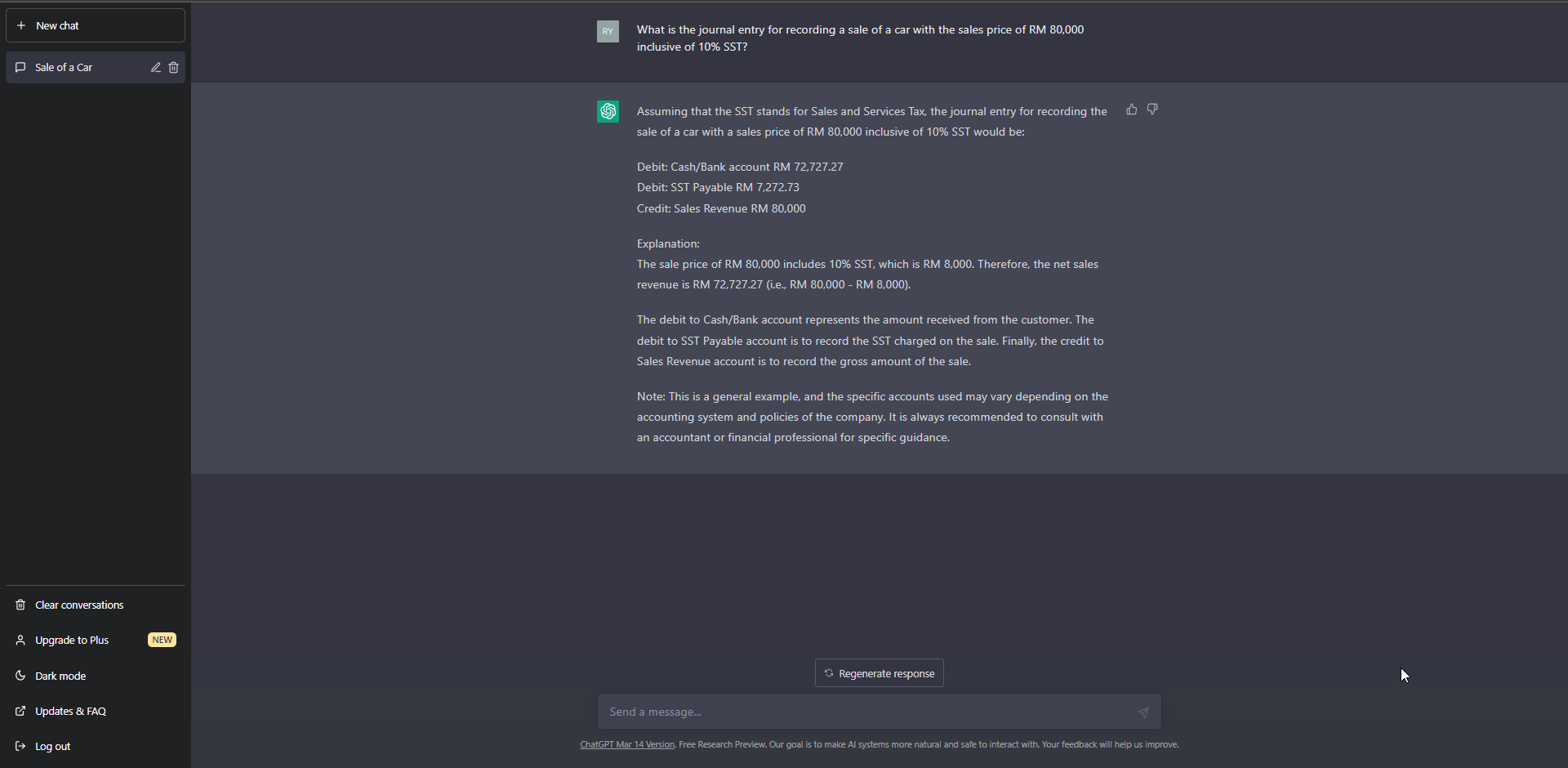
7. Continue the conversation:
You can continue interacting with ChatGPT by typing more messages or asking additional questions. Remember that ChatGPT may not always provide perfect responses, but it can generally offer helpful insights, suggestions, or support for various tasks.
If you see that the output stopped halfway like not complete, you can actually nudge it just by keying in “continue” as the prompt.
8. End the session:
When you are finished with your conversation, simply close the chat window or log out of your OpenAI account. To initiate a new conversation, click on “New chat” in the top left corner.
Tips for Using ChatGPT Effectively:
- Keep your prompts simple and specific.
- Engage conversationally with the chatbot.
- If the chatbot provides an incorrect response, ask it to try again.
- Always double-check and proofread the information provided by ChatGPT, as it may not always be accurate.
If you experience “at capacity” issues accessing free version of ChatGPT due to high traffic, try refreshing the webpage and attempting again.
Alternatively, consider subscribing to ChatGPT Plus for USD 20 per month to gain priority access and minimize wait times. Just click on the “Upgrade to Plus” at the left side menu.
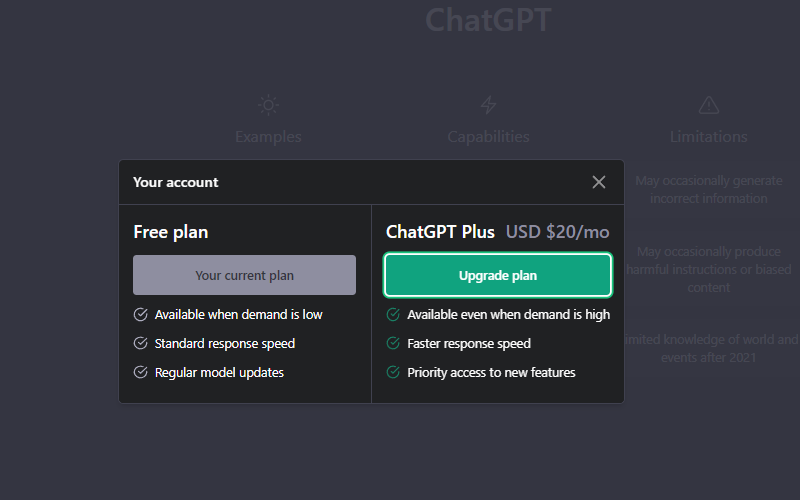
Do note that you can’t use ChatGPT 4 model if you are not on the ChatGPT Plus subscription plan. There are other methods or tools available that can use the newer version of ChatGPT which we will discuss below.
ChatGPT Plus subscription benefits
No more waiting during high demand
With ChatGPT Plus, you won’t have to worry about accessibility during peak times. Free users might struggle to get in when everyone’s trying to use the tool, but with a subscription, you’re always good to go.
Speed it up with Turbo mode
Want faster responses? ChatGPT Plus subscribers can switch between regular and speed-optimized Turbo mode. Say goodbye to waiting around for answers!
Get exclusive GPT-4 access
You’ll also be among the first to experience GPT-4, OpenAI’s latest new AI language model. It’s exclusively available to ChatGPT Plus users.
Be the first to try new features
As a ChatGPT Plus subscriber, you’ll enjoy early priority access to new features. Test them out before anyone else and stay ahead of the game!
No more usage limits to hold you back
If you rely on ChatGPT for work or education, you might hit a usage limit roadblock as a free user. With ChatGPT Plus, those limits won’t hold you back.
So, should you subscribe to ChatGPT Plus?
If you depend on ChatGPT to get things done, I’d say go for it! A subscription guarantees round-the-clock access, making it a worthwhile investment for your work or educational needs.
However, if you are not using it extensively to justify the monthly subscription of 20 USD, you may look for other alternatives that suit your usage level.
Mainly, you can opt for the pay-as-you-go model that is through the OpenAI API.
Then you can use tools like TypingMind — A better UI for ChatGPT where you can put in your own OpenAI API key and uses GPT 3.5 or GPT-4 depending on which model your account has access to.
Or, you can try out another tool like Halist AI: Fast and private ChatGPT everywhere that offer free to use GPT 3.5 for 30 usage per month. They also offer paid plan with unlimited usage of GPT-3.5 or GPT-4 with a fair usage policy in place. Which model version being used is depend on which package you subscribed to.
How to Use ChatGPT for SME Digitalisation
Here’s how to use the AI chatbot in your business digital transformation journey.
Customer Support Automation
Integrating ChatGPT into your customer support system can help handle high volumes of inquiries more efficiently. AI-powered chatbots can address common questions, allowing human agents to focus on more complex issues.
Imagine a travel agency with the use of ChatGPT to answer frequently asked questions about booking policies, travel restrictions, and itinerary suggestions, ensuring quick and accurate responses while freeing up staff to handle unique customer requests.
Content Generation
From blog post ideas to social media content and email campaigns, ChatGPT be used to generate fresh and engaging material for your business. This saves time and ensures a consistent brand voice across all platforms.
An online fitness platform could utilize ChatGPT to create workout tips, nutrition advice, and motivational content for their blog and social media channels, keeping their audience engaged and informed.
Data Analysis
ChatGPT can process large datasets, identifying trends and patterns that inform data-driven decision-making. This empowers SMEs to make strategic choices based on insights rather than guesswork.
A retail store could leverage ChatGPT to analyze customer reviews and feedback, identifying common themes and areas for improvement, ultimately enhancing the shopping experience.
Internal Communication
AI-powered tools like ChatGPT can assist with meeting summaries, policy updates, and employee onboarding, keeping your team informed and engaged.
For instance, a software development company could use ChatGPT to generate concise meeting notes, allowing team members to stay updated on project progress and decisions made during meetings.
Integrating ChatGPT into Your SME
Choosing a ChatGPT Provider
To find the right ChatGPT solution for your business, compare available options, and assess your specific needs. Consider factors such as pricing, features, and ease of implementation.
Look for providers with a proven track record, reliable customer support, and a commitment to continuous improvement in their AI models.
Implementation Process
Successfully integrating ChatGPT into your SME involves planning, training the AI model, and testing and refining the system. This ensures that the AI understands your unique business context and can deliver the desired outcomes.
Start by identifying the areas where ChatGPT can have the most significant impact, such as customer support or content generation. Then, work closely with your provider to train the model using relevant data and fine-tune its performance.
Monitoring Performance
Track success metrics and continuously improve the AI model to ensure optimal performance. Regular monitoring helps identify areas for improvement and keeps your ChatGPT solution up to date.
Establish key performance indicators (KPIs) to measure the effectiveness of ChatGPT in your business, such as response time, customer satisfaction, and content engagement.
Overcoming Challenges in ChatGPT Adoption
Outdated Training Data
ChatGPT’s training data only goes up until 2021, which means it may not have the most recent information on certain topics. It is recommended to keep track of any changes or updates in your industry or field and provide this information as context when using ChatGPT.

Always encourage users to verify the AI-generated content with the latest available data from reliable sources.
Lack of Internet Access
ChatGPT is unable to access the internet, meaning it cannot read or provide real-time information about specific websites or their content. Try to utilize human expertise to supplement ChatGPT’s capabilities when it comes to accessing real-time web data or understanding specific websites.

However, we can paste all the text from a website or article to the chatbox, and then prompt ChatGPT to answer based on those texts.


Always encourage your team to research and cross-check the AI’s suggestions with up-to-date online resources.
Security and Privacy Concerns
Protecting data is crucial when using AI tools like ChatGPT. Implement best practices, such as encryption and secure access controls, to safeguard sensitive information.
Work with your ChatGPT provider to establish data handling protocols and ensure compliance with privacy regulations like PDPA. Some ChatGPT tools that use OpenAI API will have their security and compliance in place.
Example of some other news regarding to these concerns: Samsung workers made a major error by using ChatGPT | TechRadar & ChatGPT banned in Italy over privacy concerns – BBC News
AI Bias
Recognize the potential for AI bias and take steps to mitigate its impact on your business. This includes using diverse training data and regularly reviewing the AI model’s output for any unintended biases.
Collaborate with your provider to address any bias issues and create a more inclusive and accurate AI solution. Some tools will have a feedback loop in place that can allow upvoting or downvoting of the output or feedback directly. The AI will then be trained accordingly to be less biased or suitable to your actual needs.
However, currently, it is workable to only a certain extent, due to the nature of the ChatGPT model. Therefore, it is recommended to always read through and vet the output for any bias or wrong information.
Employee Resistance
Address concerns about job security by emphasizing the benefits of AI support rather than replacement. Showcase how ChatGPT can enhance employees’ roles, making their work more efficient and enjoyable.
Involve your team in the implementation process and provide ongoing training to help them understand and make the most of ChatGPT’s capabilities.
Conclusion
ChatGPT offers a powerful way to accelerate SME digitalisation, helping businesses stay competitive and grow. By embracing this technology and learning from real-world examples, SMEs can transform customer support, content generation, data analysis, and internal communication, ensuring continued success in the digital age.
If you’re interested in learning more about how ChatGPT can benefit your business, you can drop us a WhatsApp message or arrange for a free IT consultation session with us. We will be happy to guide you through the process and explore tailored solutions to meet your unique needs.
We will be posting more ChatGPT related useful tips and tricks for SME Digitalisation. Do follow us at our Facebook page for more updates.
UPDATE: We’ve rounded up some of the best ChatGPT Prompts to help SMEs digitalize their businesses.
Frequently Asked Questions (FAQs)
1. What is ChatGPT?
ChatGPT is an AI language model that understands and generates human-like text. It can be used for various applications, such as customer support automation, content generation, data analysis, and internal communication.
2. How can ChatGPT benefit my SME?
ChatGPT can help your SME by automating tasks, improving efficiency, and enhancing customer experiences. It can streamline processes, generate engaging content, analyze data, and assist with internal communication.
3. Are there any risks associated with using ChatGPT?
There are potential risks, such as security and privacy concerns and AI bias. However, these can be mitigated by implementing best practices, using diverse training data, and continuously monitoring the AI model’s performance.
4. How do I choose the right ChatGPT provider for my business?
Compare available options and assess your specific needs. Consider factors such as pricing, features, and ease of implementation to find the best fit for your SME.
5. Can ChatGPT replace human employees in my company?
ChatGPT is designed to complement and support human employees, not replace them. Automating certain tasks and improving efficiency, allows employees to focus on more complex and creative aspects of their work.






